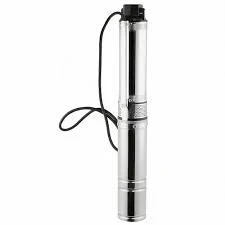ធ្នូ . 20, 2024 07:27 Back to list
Common Issues Faced by Submersible Pumps and Their Solutions
Common Problems with Submersible Pumps and Their Solutions
Submersible pumps are crucial components in various applications, including groundwater extraction, sewage treatment, and industrial processes. Though these pumps are designed for submerged operation, they are not immune to problems. Understanding common issues and their solutions can help in maintaining performance and longevity.
1. Overheating
One of the most frequent issues submersible pumps face is overheating. This typically occurs due to running the pump out of water or at a low flow rate for extended periods. Overheating can damage the motor and lead to complete pump failure.
Solution Always ensure that the pump is fully submerged before operation. Installing a float switch can help automatically shut down the pump if the water level drops below a safe threshold. Additionally, regular maintenance checks can ensure that the pump is not blocked or clogged, allowing it to function efficiently.
2. Clogging
Submersible pumps are often used in dirty water applications, which means they are prone to clogging. Materials such as sand, mud, and debris can accumulate inside the pump or within the impeller, leading to reduced performance or complete blockage.
Solution Using a pump with a larger diameter impeller or a filter can help prevent clogging. Regular cleaning and maintenance of the pump are critical to ensuring that any debris is removed quickly before it can cause significant issues.
Electrical failures in submersible pumps can result from a variety of factors, such as short circuits, blown fuses, or motor burnout. Since these pumps operate underwater, water entering the electrical components can lead to severe damage and safety hazards.
Solution Ensure that all electrical connections are watertight and that cables are insulated appropriately. Installing a circuit breaker or overload protection can help prevent electrical failures from damaging the pump.
submersible pump problems

4. Vibration and Noise
Unusual vibrations and noises during operation can indicate issues such as misalignment, cavitation, or worn bearings. These problems can lead to performance inefficiencies and, if left unchecked, may damage the pump significantly.
Solution Regularly inspect the pump and its components for wear and tear. Aligning the pump and motor correctly can help minimize vibrations. Addressing cavitation by adjusting the pump's pressure and flow rate can also help restore smooth operation.
5. Sealing Failures
The integrity of seals in a submersible pump is vital. If seals fail, water can enter the motor housing, leading to short circuits and corrosion. Common causes of seal failure include excessive pressure, thermal strain, and physical damage.
Solution Selecting a pump with high-quality seals designed for the specific application is crucial. Regular inspections of seals can help catch any wear early, allowing for timely replacements before they lead to more severe issues.
6. Inadequate Pump Capacity
Sometimes, a pump may not be able to handle the required flow rate or head pressure. This can be caused by incorrect sizing or changes in water demand or supply patterns.
Solution Before installation, carefully evaluate the required flow rate and head to select an appropriately sized pump. Consulting with a pump specialist can provide insights into the best options for your specific application.
Conclusion
Submersible pumps are essential for many water-related tasks, but they may encounter various problems that can hinder their effectiveness. By being aware of these common issues and implementing preventive measures, operators can ensure the long-term efficiency and reliability of their submersible pumps. Regular maintenance and proper operational practices are key to overcoming potential challenges and extending the lifespan of these critical devices.
-
submersible-sump-pump-auto-drainage-for-crawlspaces
NewsAug.22,2025
-
solar-powered-stainless-steel-submersible-well-pump-setup
NewsAug.22,2025
-
stainless-steel-well-pump-flow-rate-optimization
NewsAug.22,2025
-
water-filled-submersible-pump-fish-farm-oxygenation
NewsAug.22,2025
-
submersible-pump-in-aquaculture-and-fish-farming
NewsAug.22,2025
-
deep-well-submersible-pump-for-drought-areas
NewsAug.22,2025
-
 submersible-sump-pump-auto-drainage-for-crawlspacesCrawlspaces, those narrow areas beneath homes, are prone to water accumulation due to leaks, groundwDetail
submersible-sump-pump-auto-drainage-for-crawlspacesCrawlspaces, those narrow areas beneath homes, are prone to water accumulation due to leaks, groundwDetail -
 solar-powered-stainless-steel-submersible-well-pump-setupHarnessing solar energy to power stainless steel submersible well pumps is a sustainable and coDetail
solar-powered-stainless-steel-submersible-well-pump-setupHarnessing solar energy to power stainless steel submersible well pumps is a sustainable and coDetail -
 stainless-steel-well-pump-flow-rate-optimizationIn various applications like agriculture, domestic water supply, and industrial use, the flow rate oDetail
stainless-steel-well-pump-flow-rate-optimizationIn various applications like agriculture, domestic water supply, and industrial use, the flow rate oDetail
